| |
|
G U A R D I A
M —
D O C S |
|
—1927 |
1928 |
1929 |
1930 |
1931 |
1932 |
1933 + |
|
1
|
2
|
3
|
4
|
5
|
6
|
7
|
8
|
9
|
10
|
11
|
12
|
|
1 2 3
4 5 6 |
1 2 3 4 5 6 |
1 2 3 4 5 6 |
1 2 3
4 5 6 |
1 2 3 4 5 6 |
1 2 3 4 5 6 |
1 2 3 4 5 6 |
1 2 3 4 5 6 |
1 2 3 4
5
6 |
1 2
3 4 5
6 |
1 2
3 4 5 6 |
1 2
3 4 5 6 |
|
MILITARY INTELLIGENCE DIVISION,
RG165, ENTRY 77 —
PAGE 1
•
PAGE 2
•
PAGE 3 |
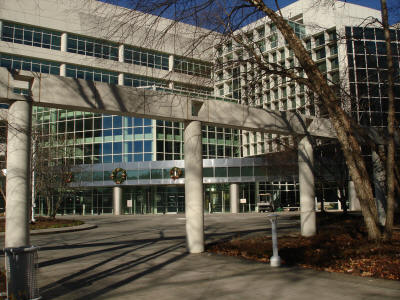 THIS IS THE THIRD OF THREE PAGES
housing documents relating to the
Guardia Nacional (Record
Group 165, Entry 77, Military
Intelligence Division on Nicaragua,
1922-1944) in US National Archives II in
College Park, MD.
This page covers the period May 1935 —
October 1941,
after which the series ends.
THIS IS THE THIRD OF THREE PAGES
housing documents relating to the
Guardia Nacional (Record
Group 165, Entry 77, Military
Intelligence Division on Nicaragua,
1922-1944) in US National Archives II in
College Park, MD.
This page covers the period May 1935 —
October 1941,
after which the series ends.
In the
interwar years, the Military
Intelligence Division was the principal
US agency charged with gathering &
reporting on military intelligence from
around the world. During World War
II it was folded into the newly-created
OSS & soon after the CIA. This
collection is especially rich on the
period from 1933-1939, from the
withdrawal of US military forces from
Nicaragua to the outbreak of the war in
Europe. It is housed together here
to preserve its original character,
though in these pages the documents are
organized chronologically. The
original files convey a sense that they
have been rifled & culled of their most
pointed or potentially controversial
reports & memoranda, suggested in part
by the seemingly random chronological
sequence and haphazard arrangement of
the material. Apparently all that
remain are carbon copies and newspaper
clippings — no signed originals were
found. (Photo: main
entrance to Archives II in College Park,
MD)
Grateful
appreciation is extended to Mr. Brandon
Ray, Summa Cum Laude
graduate from Ashford University in Iowa
(with a B.A. in History and a minor in
Political Science) for his meticulous
transcriptions of the documents in this
collection. Thank you, Brandon!
|
|
|
|
|
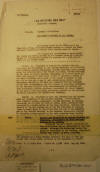
|
May 14, 1935.
"The Trial & Sentence of Lt. Abelardo
Cuadra," US Military Attaché ad interim Alex
Cohen, San José, p. 1.
"G-2 Report. ¶
6300-a ¶ NICARAGUA – Combat. ¶ Subject:
Loyalty & Discipline. ¶ The trial & sentence
of Lt. Cuadra. ¶ As already report in No.
2663, April 30, from this office, President
Sacasa refused to confirm the death sentence
imposed by a General Court Martial upon Lt.
Cuadra. ¶ The charges and specifications
under which Lt. Cuadra was tried, as well as
the reasons given by President Sacasa for
refusing to confirm the sentence have just
come to hand, and are quoted below: ¶
CHARGE: 1. Violation of article 58, Articles
for the Government and Discipline of the
Guardia Nacional. SPECIFICATION: That
Abelardo Cuadra, Lieutenant, Guardia
Nacional, being present among the enlisted
men of the Second Battalion, Guardia
Nacional, at the Campo de Marte, Managua,
Nicaragua, on or about April 17, 1935, did
neglect to make every effort to suppress a
mutiny of the said Battalion, on account of
the recent reduction of pay, nor did he take
any steps to take disciplinary action,
rather appointing himself as defender and
champion (through harangue) of the said
organization, for the purpose of conveying
personally to the Director in Chief their
non-conformity and protest and that
afterwards, without previous permission, he
placed himself at the head of the Battalion,
presenting himself to the Director in Chief,
asserting his adhesion and fidelity. ¶
CHARGE: 2. Violation of Art. 67, Articles
for the Government and Discipline of the
Guardia Nacional. SPECIFICATION: That
Abelardo Cuadra, Lieutenant, Guardia
Nacional, in Managua, Nicaragua, on or about
the 18th of April, 1935, endeavored and
commenced to provoke mutiny in the Campo de
Marte, inciting the members of the 3rd
Company and of the 2nd Battalion to imposed
terms by armed force to the effect that the
pay of the enlisted men of the Guardia
Nacional be not reduced, endeavoring thereby
to illegally assume command of the said
organizations, voiding [paper in way of
text] ¶ 6300-a ¶ [On carbon-copy slip of
paper attached:] Loyalty and
Discipline in Guardia Nacional of Nicaragua.
Disapproval of Death Sentence Imposed on Lt.
Cuadra. ¶ President Sacasa’s strict
observance of the constitution was an
obligation of his high office. Although his
action may weaken the state of discipline in
the Guardia, punishment (other than death)
is still possible. ¶ . . . no sentence
of a Court Martial involving the loss of
life may be put into effect until confirmed
by the Commander in Chief”. ¶ From: M. A.
Costa Rica ¶ Report No. 2879 ¶ Date: May 14,
1935."
|
|
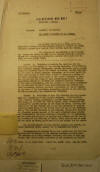
|
May 14, 1935.
"The Trial & Sentence of Lt. Abelardo
Cuadra," US Military Attaché ad interim Alex
Cohen, San José, p. 1A.
" . . . [voiding]
and disregarding the legal military
authority of his superiors, an act which was
about to be carried out between one and two
in the morning of the 19th day of April,
1935, when he was to come to the Campo de
Marte, which was to be the signal for the
start. ¶ The specifications of both charges
having been proven, the Court sentenced
Lieut. Cuadra “To be degraded and shot”. ¶
Sub-paragraph d, article 44 or the
Regulations for the Discipline and
Government of the Guardia Nacional provides
that: [“no sentence of a Court Martial
involving the loss of life may be put into
effect until confirmed by the Commander in
Chief”. ¶ From: M. A. Costa Rica ¶ Report
No. 2879 ¶ Date: May 14, 1935.]"
|
|
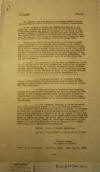
|
May 14, 1935.
"The Trial & Sentence of Lt. Abelardo
Cuadra," US Military Attaché ad interim Alex
Cohen, San José, p. 2.
" . . . G-2
Report. ¶ 6,300-a ¶ In returning the
proceedings of the Court Martial without his
approval, President Sacasa made the
following observations: ¶ In the chapter on
Rights and Guarantees, art. 34 of our
political constitution prescribes that in
the military branch “The death penalty may
only be inflicted for the crime of high
treason committed during a foreign war, and
when confronted by the enemy”; while article
83 provides that the laws which regulate the
carrying into effect of constitutional
guarantees shall be void whenever they
diminish, restrict or lessen them. ¶ Within
these rules, the application of the death
penalty being restricted to the military
crime stated, it is evident that article 58
of the Regulations for the Government and
Discipline of the Guardia Nacional lacks
force to impose this penalty in the case of
Lieut. Cuadra, notwithstanding the
seriousness of the crime committed by him,
and no matter how strong may be the
arguments given for the infliction of
exemplary punishment. The law should guide
our reasoning and there is no way other than
its due observance. ¶ THEREFORE: In
conformity with the laws mentioned and
insert (e) of article 44 of the same
regulations, this office resolves: To deny
confirmation to the sentence condemning
Lieut. Abelardo Cuadra, Guardia Nacional, to
be shot; and in consequence returns the
proceedings to the Director in Chief of the
Guardia Nacional so that he may pronounce
one which should substitute it. ¶ The
foregoing argument by President Sacasa,
citing constitutional provisions, would seem
to indicate that legally he was entirely
within his rights in refusing to confirm the
death sentence. ¶ It also would seem to
indicate that those who originally prepared
the “Regulations for the Government and
Discipline of the Guardia Nacional” made the
‘slight’ mistake of disregarding the
provisions of the Constitution of Nicaragua,
and that consequently article 58 of these
regulations is inconstitutional
[unconstitutional]. ¶ In this instance,
however, it certainly would have been
immeasurably better if the President had
forgotten legal amenities and permitted the
sentence to stand. He certainly would have
rendered a greater service to his country by
for once and all instilling a little fear in
the hearts of that part of the Guardia to
whom thoughts of personal gains come before
any sense of loyalty or duty. As in the case
of the setting aside of the sentence of
Lieut. López, it encourages recurrences of
this nature and seriously handicaps those in
charge of the Guardia from keeping it a
dependable organization. ¶ Source: Press &
Personal Knowledge. ¶ FOR AND IN THE ABSENCE
OF THE MILITARY ATTACHE: ¶ Alex A. Cohen, ¶
In charge of office. ¶ From: M. A. Costa
Rica ¶ Report No. 2,879 ¶ Date: May 14,
1935"
|
|
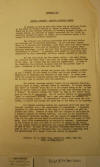
|
June 12, 1935.
"Appendix 'A' - General Remarks - Central
American Armies," US Military Attaché, San
José, p. 1.
"APPENDIX “A” ¶
GENERAL REMARKS – CENTRAL AMERICAN ARMIES ¶
In general it may be said that there are no
military forces of any value in Central
America as judged by modern standards. There
are no well trained officers, no modernly
equipped troops, no trained staffs, no
services of supply organized for the field,
no artillery (except in name), no tanks, and
no aviation except a few planes in the three
northern Republics. ¶ The officers are
usually politicians with military titles and
uniforms but no military knowledge. As the
officers, except those in El Salvador and
Guatemala, lose their jobs with every change
of administration, they have no incentive
either to improve their military knowledge,
or work any more than is necessary during
their “incumbency of office.” In general,
they cannot be said to be distinguished by
their knowledge, ability, energy, honesty or
loyalty. ¶ The men soon learn the few simple
drills – the only things the officers can
teach them – and then lie around doing
nothing most of the time. As a class they
are lazy and unambitious. In most of the
Republics the soldiers in peace time are the
poorest type of peon – attracted by the easy
and lazy life. ¶ Although poorly trained and
poorly led, the average soldier is not a
coward, is not afraid to fight, and is not
afraid to die. Especially in Nicaragua and
Honduras is this true. In these countries
the so-called soldiers become most excellent
jungle fighters – and in this type of
warfare find few superiors. ¶ The Central
American soldier fights for no abstract
theories, such as right or wrong, national
honor or prestige. He fights because his
“jefe” or “patron” tells him it is the
proper thing to do. In his mind he neither
owes nor pays allegiance to any such
nebulous idea as a “state.” He blindly
follows his “jefe” as long as the latter
takes care of him and is successful. But in
Central America an unsuccessful “jefe” is
considered unlucky, and a poor peon cannot
be expected to follow an unlucky leader. An
unsuccessful leader soon loses his
following, no matter how worthy the cause
may be for which he is fighting. ¶ All
Central American armies are organized first
and last for internal conflict, i.e., the
suppression of revolutions. A possible
exception to this statement is the Army of
El Salvador, as will be pointed out later.
Because of this fact the science of
artillery is a complete mystery in Central
America. Not only is the theoretical and
technical knowledge lacking, but the supply
of ammunition available for the guns on hand
would be sufficient for a few hours of fire
only. Also field communication is absolutely
unknown. Conspicuous by its absence is also
all idea of service of supply in the field.
All the armies intend to improvise the
supply and evacuation systems in case of
war. As none of the generals concerned can
visualize an army of over a couple of
thousand men, the confusion resulting from
the mobilization of a larger force can
easily be imagined. ¶ (Source: M. A. Costa
Rica, Report No. 2924, June 12, 1935;
G-2/265-260/2.) . . . "
|
|
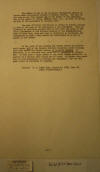
|
June 12, 1935.
"Appendix 'A' - General Remarks - Central
American Armies," US Military Attaché, San
José, p. 2.
" . . . The number
of men in the so-called unorganized reserve
of course means practically nothing in
Central America. The size of the army in war
time depends not on the number of men
available, but on the number of rifles,
machine guns, etc., on hand, or on the
ability of the government to purchase more.
¶ The most difficult information to obtain
in Central America is data on the arms in
the possession of the government. This
information is jealously guarded lest it
fall into the hands of the other governments
or the internal enemies of the
administration. Even in Costa Rica, when new
arms or ammunition is purchased, the
transaction is kept a deep secret and
camouflaged so as not to appear in the
budget. ¶ In the event of war between the
United States and another world power, all
of the Central American Republics could be
swung into line behind the United States, if
properly handled. If desirable, it is
believed they could all be persuaded to
declare war. In this case a large number of
men would become available – a quarter of a
million able bodied men at least. Of course
they would have to have assistance in
training and equipment – but the man power
would be available if required. ¶ (Source:
M. A. Costa Rica, Report No. 2924, June 12,
1935; G-2/265-260/2.)"
|
|
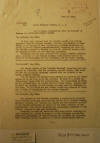
|
June 14, 1935.
Translations of articles from
La Noticia
(Managua) in May 1935, US Military Attaché
Major A. R. Harris, San José, p. 1.
"June 14, 1935. ¶
MEMORANDUM TO: Latin American Section, M. I.
D. ¶ The following translations from “La
Noticia” of Managua are submitted without
remark: ¶ “La Noticia”, May 21st. ¶ We have
been informed that Lt. Bolivár Cantón – an
officer graduated from the Managua Academy –
who has been serving in Chontales, is on his
way to this capital as a prisoner on account
of having expressed himself
unsympathetically regarding the Chief of The
Guardia, General A. Somoza, in a recent
political meeting held in Juigalpa in honor
of this military candidate. ¶ Similarly have
we been informed that Captain Federico
Cabrera, also a graduate of the Managua
Academy – has already been or is about to be
discharged, not for political, but for moral
reasons. ¶ “La Noticia”, May 21st. ¶ The
latest number of the “Guardia Nacional”
magazine, now out, carries an editorial from
the Director, General Somoza, from which we
take the following paragraph related with
the affaire of ex-Lieut. Abelardo Cuadra. ¶
“In the future the Director will neither by
generous nor sentimental as he has been up
to the present. He will be a severe and
disciplinary judge with his subordinates.
The regulations by which we are governed
will be applied with all their rigor.
Justice will be meted out quickly and
effectively in every case of violation of
our laws. So let those who not always follow
the dictates of honor and precepts of
discipline in the service beware!” ¶ “La
Noticia”, May 22nd. ¶ The command of the
Guardia confirmed a report which appeared in
La Noticia yesterday regarding the arrest of
Lt. Bolivár Cantón, graduate officer, for
“failing in respect due the Director in
Chief of the Guardia Nacional”, as stated by
the staff officers of the institution. The
report regarding the approaching discharge
of the officer referred to was also
confirmed. ¶ According to details, which are
well nigh public knowledge in this capital,
Lt. Cantón pronounced himself strongly
against the political personality of General
Somoza and attacked his presidential
candidacy on the occasion of a recent
demonstration made in . . . "
|
|
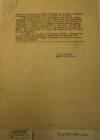
|
June 14, 1935.
Translations of articles from
La Noticia
(Managua) in May 1935, US Military Attaché
Major A. R. Harris, San José, p. 2.
" . . . favor of
the military candidate mentioned in the city
of Juigalpa, Department of Chontales, where
Lt. Canton was serving. ¶ In military
circles it is furthermore said that Lt.
Cantón flagrantly violated Order 17 of the
Guardia Nacional prescribing punishment for
alcoholics and that he was under the
influence of liquor when he attacked the
candidacy of General Somoza, having been
placed immediately under arrest in that
city. For the purpose of being discharged he
will be transferred to the Campo de Marte.
Up to the moment it is not known whether he
will be tried by a Court-Martial. ¶ Lt.
Cantón is the son of don Gustavo Cantón, a
conservative, and he received his diploma as
cadet-officer during the last course of the
Military Academy of Managua held under the
command of American officers. ¶ A. R.
Harris, ¶ Major, G. S., M. A."
|
|
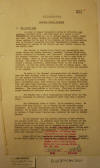
|
June 1935—Early
1938.
"Abridged Combat Estimate" of Guardia
Nacional, compiled from US military attaché
reports 1935-1938, p. 1.
"6010-a ¶ 6010-b ¶
N I C A R A G U A ¶ ABRIDGED COMBAT ESTIMATE
¶ I. THE ACTIVE ARMY. ¶ In order to insure
Nicaragua’s having an efficient,
non-political National Guard – one that
would be a credit to the Americans who
instructed it – U. S. Marines sweated,
worked, fought and died. But today, instead
of a smooth functioning, efficient force,
working for the good of its country, we find
an organization, torn by internal dissention
into many discontented factions, each
suspicious and jealous of the others, and
each working towards its own selfish ends. ¶
The Guardia is divided into Liberal and
Conservative factions; Sacasa and Somoza
factions; “academic” (trained in military
school conducted by Marines), and
“political” (appointed for political
reasons) factions. One man may belong to two
or even three of these groups. There is
little cooperation and much unrest in the
Guardia. The dream of its organizers, who
hoped they were leaving behind a strong,
patriotic, stabilizing force, is far from
being realized. In fact the exact opposite
is what is taking place. The Guardia is now
one of the most serious threats to peace and
quietude in the country. ¶ In spite of its
internal disorganization the Guardia is
perhaps the best fighting force in Central
America today. Practically all the younger
officers and many of the enlisted men have
had experience in guerilla warfare. They can
handle their rifles, machine guns,
sub-machine guns, hand grenades, and rifle
grenades very well. They can march long
distances, and know the value of cover. But
outside of minor tactics in guerilla warfare
they of course have had no training. They
know nothing of artillery. They have no
aviation, signal service or effective
services of supply and evacuation. ¶ The
Guardia has a staff organization modeled
after our own, but it resembles an infantry
regimental staff more than a general staff.
¶ The Nicaraguan likes to fight. He is
naturally cruel. He values life very
lightly. He is strong and can withstand
great hardships. He is not disciplined but
he will follow his “jefe” blindly. He is
brave and often reckless. Properly trained
and led he becomes a first class fighting
man, probably the best in Central America. ¶
At the present time the Guardia consists of
209 officers and roughly 2,200 men. In
addition there are 487 officers and men in
the Auxiliaries and Urban Police. The
Auxiliaries form an ununiformed body of men
which can be expanded in an emergency and
reduced after the emergency has passed. The
best known officer with this force is
“General” Juan Escamilla, a Mexican,
reported to be a brave and ruthless fighter.
¶ About 30% of the Guardia is stationed in
Managua. Included in the above figure is the
Presidential Guard of 200 men and about a .
. . "
|
|
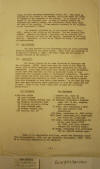
|
June 1935—Early
1938.
"Abridged Combat Estimate" of Guardia
Nacional, compiled from US military attaché
reports 1935-1938, p. 2.
|
|
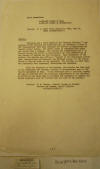
|
June 1935—Early
1938.
"Abridged Combat Estimate" of Guardia
Nacional, compiled from US military attaché
reports 1935-1938, p. 3.
|
|
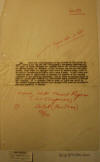
|
May 8, 1936.
Excerpt from Military Attaché's Travel
Report on Military Situation in Managua.
|
|
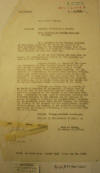
|
May 29, 1936.
"Five Privates of Guardia Shot for Treason,"
US Military Attaché ad interim Alex Cohen,
San José.
"G-2 Report. ¶
6,300-a ¶ NICARAGUA – Combat. ¶ Subject:
Loyalty, Discipline & Morale. ¶ Five
Privates of Guardia Shot for Treason. ¶ Five
privates of the Guardia Nacional of
Nicaragua, stationed at, or in the vicinity
of Cabo Gracias a Dios, on the Atlantic
Coast, were on May 27th found guilty of
treason by a hastily convened Court Martial
and shot the same day. ¶ As far as this
office has been able to learn, the
circumstances leading to this summary action
were the following: ¶ Captain Matute, in
charge of the Guardia Detachment at Cabo
Gracias learned that five of his men had
reached an understanding with a former
Sandino lieutenant, “General” Simón
González, for the purpose of overpowering
the small Cabo Gracias garrison, obtain the
three machine guns, some thirty rifles and
ammunition on hand there and, once those
arms were obtained, go on a marauding
expedition into the interior of Nicaragua.
It is stated that, during the trial, two of
the men confessed their complicity in the
plot. ¶ Although the foregoing, of course,
is an isolated instance of disloyalty, it
would seem to indicate that in the isolated
regions loyalty of the enlisted personnel of
the Guardia is an uncertain factor.
Reductions in pay, lack of uniforms,
clothing and footwear combined by the
example set by officers in charge of
isolated districts in high-handedly
recognizing no authority other than General
Somoza, the Commanding Officer of the
Guardia all are contributory factors towards
making the loyalty of the enlisted
personnel, especially in outlying districts,
a very uncertain factor at its best. ¶
Source: Press, personal knowledge. ¶ FOR AND
IN THE ABSENCE OF THE M. A. ¶ Alex A. Cohen,
¶ In charge of office. ¶ From: MA Costa Rica
¶ Report 3477 ¶ Date: May 29, 1936."
|
|
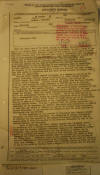
|
October 28,
1937.
"Nicaraguan Army," US Military Attaché's
Report, p. 1.
|
|

|
October 28,
1937.
"Nicaraguan Army," US Military Attaché's
Report, p. 2.
|
|
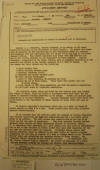
|
March 2, 1938.
"Strength and Organization of Troops in
Northern Part of Nicaragua," US Military
Attaché's Report, p. 1.
|
|
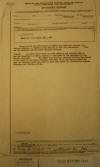
|
March 2, 1938.
"Strength and Organization of Troops in
Northern Part of Nicaragua," US Military
Attaché's Report, p. 2.
|
|
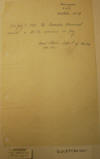
|
October 4, 1939.
Guardia Nacional Receives 20% Increase in
Pay, Report of US Naval Attache.
|
|
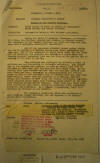
|
November 25,
1939.
"Morale of the Guardia Nacional," US
Military Attaché Col. J. B. Pate, San José,
p. 1.
|
|
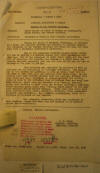
|
November 25,
1939.
"Morale of the Guardia Nacional," US
Military Attaché Col. J. B. Pate, San José,
p. 2.
|
|
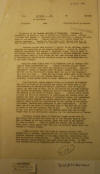
|
March 14, 1940.
"Efficiency of the Guardia Nacional of
Nicaragua," US Naval Attaché Major F. E.
Lamson-Scribner, p. 1.
|
|
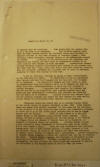
|
March 14, 1940.
"Efficiency of the Guardia Nacional of
Nicaragua," US Naval Attaché Major F. E.
Lamson-Scribner, p. 2.
|
|
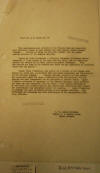
|
March 14, 1940.
"Efficiency of the Guardia Nacional of
Nicaragua," US Naval Attaché Major F. E.
Lamson-Scribner, p. 3.
|
|
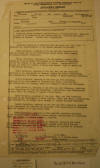
|
July 25, 1940.
"President Somoza Announced Redistribution
of Guardia Nacional," US Naval Attaché
Captain F. M. June.
|
|
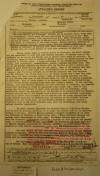
|
September 6,
1940.
"Military Training System — Military Mission
for Nicaragua," US Naval Attaché Captain F.
M. June, p. 1.
|
|
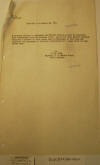
|
September 6,
1940.
"Military Training System — Military Mission
for Nicaragua," US Naval Attaché Captain F.
M. June, p. 2.
|
|
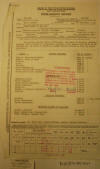
|
September 27,
1940.
Naval Intelligence Report on "Nicaraguan
Army Pay, Enrollments, etc.," US Military
Attaché ad interim 1st Sgt. R. M.
Hendrickson, p. 1.
|
|
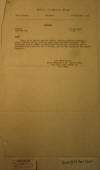
|
September 27,
1940.
Naval Intelligence Report on "Nicaraguan
Army Pay, Enrollments, etc.," US Military
Attaché ad interim 1st Sgt. R. M.
Hendrickson, p. 2.
|
|
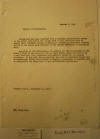
|
October 1, 1941.
Extract of Information on General Somoza's
Reassignment of All Senior Army Officers.
|
|
|
|
|
End of Military
Intelligence Division material specifically
treating the Guardia Nacional de Nicaragua.
|
|
|
|
|
G U A R D I A
M —
D O C S |
|
—1927 |
1928 |
1929 |
1930 |
1931 |
1932 |
1933 + |
|
1
|
2
|
3
|
4
|
5
|
6
|
7
|
8
|
9
|
10
|
11
|
12
|
|
1 2 3
4 5 6 |
1 2 3 4 5 6 |
1 2 3 4 5 6 |
1 2 3
4 5 6 |
1 2 3 4 5 6 |
1 2 3 4 5 6 |
1 2 3 4 5 6 |
1 2 3 4 5 6 |
1 2 3 4
5
6 |
1 2
3 4 5
6 |
1 2
3 4 5 6 |
1 2
3 4 5 6 |
|
MILITARY INTELLIGENCE DIVISION,
RG165, ENTRY 77 —
PAGE 1
•
PAGE 2
•
PAGE 3 |
TOP OF PAGE
|
|
|

